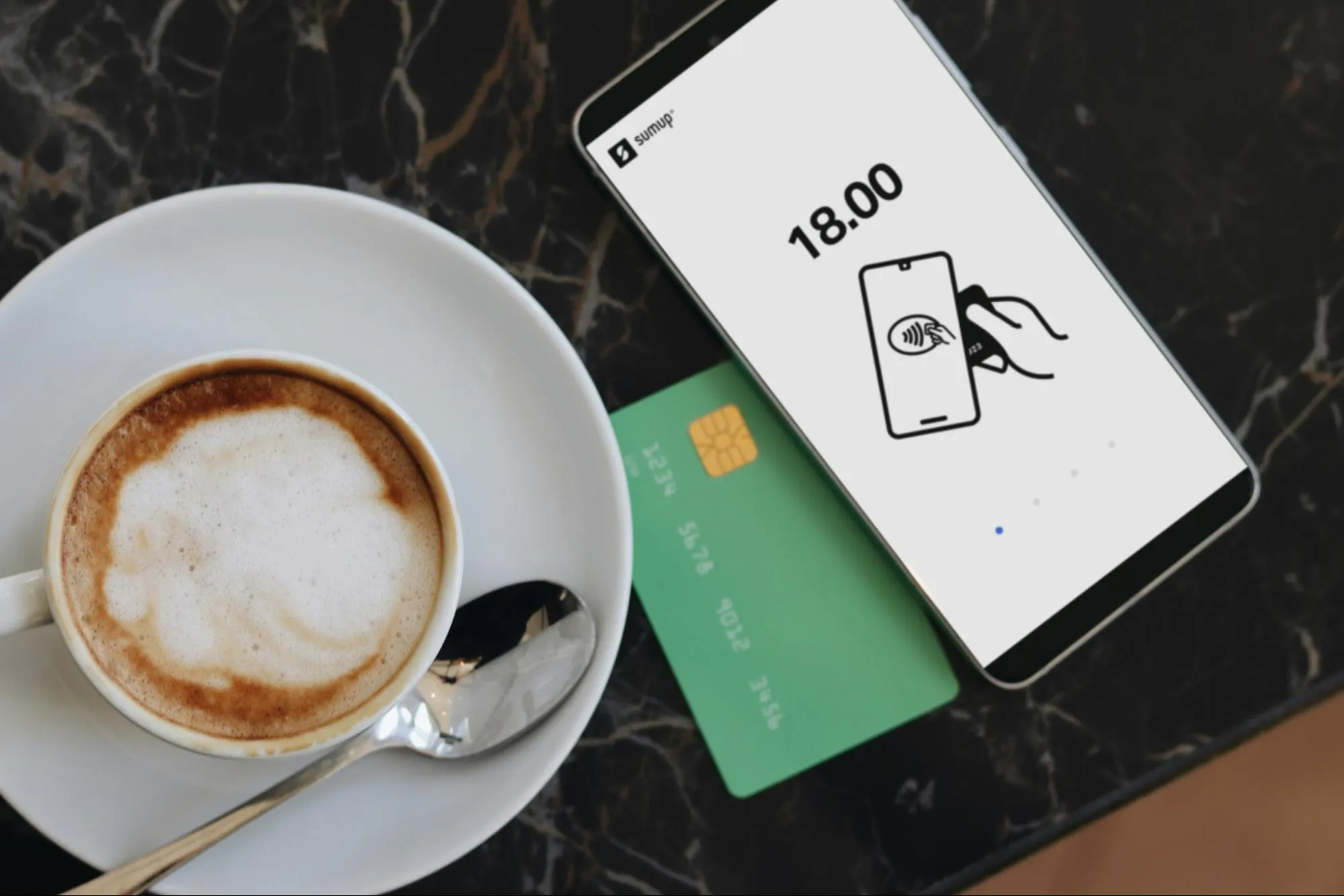As the world becomes more focused on health and well-being, it’s no surprise that the weight loss market is growing. In fact, according to predictions, the market is likely to hit a value of $354.32 billion in 2025. That’s a lot of businesses within the industry, and the more there are, the more complexities appear.
The main reason for this is because weight loss businesses are classed as high-risk, and many payment platforms have an issue with this. A high number of chargebacks can cause certain platforms to suspend or lock accounts, seriously disrupting your business. For that reason, finding a platform like PayCompass that offers a nutraceutical merchant account is key.
PayCompass Weight Loss Merchant Accounts
There are many different types of businesses that fall under the weight loss industry umbrella. As much as these types of products are in-demand, they’re still classified as high-risk by regular payment platforms.
It’s easy to assume that an in-demand business will make a lot of money but it also creates a headache in other ways. For instance, high-risk businesses tend to have a lot more chargebacks, and because of their classification, they often have to pay higher payment processing fees. All of this eats away at profits and also creates a strong risk of payment account restrictions or locks.
The answer to all of this is PayCompass. We offer tailored high-risk merchant accounts for businesses just like yours, complete with chargeback protection and low fees. You won’t have to worry about your account being restricted or locked; instead you can enjoy a simple and efficient payment solution.
The Intersection of Health and Finance
A smooth weight loss payment gateway helps to create a bridge between customers keen to purchase health products and financial solutions. Of course, there are still challenges to overcome but there are also many opportunities too.
It’s vital to understand all of this to ensure success in what is still a very niche market, and one that’s extremely booming. For instance, a survey by the Pew Research Center found that 53% of Americans who know about weight loss drugs such as Wegovy and Ozempic believe them to be suitable choices for people with weight-related health problems.
Understanding Consumer Behavior in Weight Loss Purchases
The first step in any business is to understand the key motivations of your customer base. In the weight loss industry, it’s not always about wanting to drop a few pounds; sometimes it can simply be about focusing more on overall health and well-being.
In this situation, customers are influenced by many different things, including social pressure, a desire for fast results, and emotional triggers. Of course, there’s also the issue of desiring social acceptance and confidence, alongside simply wanting to improve overall health.
Long-Term Commitment Trends
Alongside the desire for a quick fix or an impulse buy, customers also commit over the long-term. There is potential for profitability here, perhaps through integrating a subscription model with a tiered payment system. This could be based on user progress and engagement, encouraging customers to commit to reduced monthly fees if they stick to their goals.
Financial Technology Adaptations for Health Products
The weight loss industry looks set to continue growing, in fact the entire health and wellness industry as a whole. Within this, financial technology is also playing a huge role in boosting security, innovation, and accessibility, particularly in weight loss business payment processing.
Secure Health Data Transmission
The secure transmission of personal and sensitive information is vitally important. Thankfully, new innovations make this a lot easier, including advanced encryption techniques that protect information during transmission. In addition, secure payment gateways ensure that sensitive information doesn’t end up in the wrong hands.
Of course, there is a strong element of trust here too. When customers know that your systems are iron-clad and extremely secure, they’ll feel a lot more confident in sharing their data, leading to more purchases.
Integrating Wellness Apps with Payment Systems
With the boom in the health industry, many apps are also integrating payment systems directly. This means that customers don’t need to go to a desktop site to make a purchase, they can do it from the app itself. As far as weight loss business payment processing goes, this makes the experience smoother on both sides, creating a higher degree of efficiency.
Regulatory Landscape

A nutraceutical merchant account helps to overcome many of the issues related to the weight loss industry.
Source: Pexels
As with all high-risk businesses, the weight loss industry has many regulations it must adhere to, no matter what the business sells. These can drastically impact payment processing for your business, and regulations such as those created by the FTC and FDA are key players to understand. In line with this, healthcare merchant services must work alongside these regulations to ensure compliance.
FDA Oversight
You’re no doubt aware that the overall weight loss industry is huge and it’s filled with many different products. These range from weight loss drugs and supplements to meal replacements and medical devices. So, it’s no surprise that the FDA (US Food and Drug Administration) ensures safety through keen oversight.
However, this isn’t equal across the board and it depends entirely on the category of the product in terms of product approval. This in itself also affects how a business handles its merchant accounts.
Product Classification and Approval Process
There are several classifications within the weight loss industry as a whole, and these have specific levels of regulation. Of course, being aware of these is a crucial part of the process and a baseline for all businesses in this industry. When a product is classified, that informs how long the process is before it receives approval and can be sold on the market.
For instance, prescription medicines for weight loss go through a much more rigorous process than over-the-counter medications. Nevertheless, ensuring FDA compliance is crucial.
Ingredient Scrutiny and Its Impact on Merchant Accounts
Due to the many different ingredients present in various weight loss medications and supplements, there are different levels of scrutiny from the FDA. It’s for this reason that many payment processors are a little reluctant to work with weight loss businesses and what gives that high-risk label. As a result, merchants face higher fees, along with an increased risk of account problems, such as locks.
It goes further. If a product is found to violate FDA regulations, there are severe penalties and this can affect merchant accounts. In this case, the account will be suspended or even closed, along with a potentially large penalty.
FTC Advertising Guidelines
In addition to FDA regulations, weight loss businesses must adhere to FTC advertising guidelines. FTC stands for Federal Trade Commission and it ensures that all products are marketed in an honest way and do not lead customers. In terms of weight loss products, this means that the claims must be completely accurate and should not be exaggerated in any way, including before and after photos. Additionally, any potential side effects should be clearly mentioned.
Social Media Marketing Compliance
Social media is also targeted by FTC guidelines as this is prime advertising ground, particularly influencers. Any financial arrangements between an influencer and business must be clearly stated within the post, e.g., on Facebook, Instagram, TikTok, or YouTube. That way, followers understand that this isn’t coming from the influencer because they simply like the product; it’s because they’re being paid to review it. Within this, reviews must be honest and not misleading at all.
The table below sums up some regulatory bodies and their impact on weight loss businesses and payment processing.
Regulatory Body | Key Areas of Focus | Impact on Payment Processing |
FDA | Product ingredients, claims | Higher scrutiny for merchant accounts |
FTC | Advertising practices, marketing claims | Increased risk assessment for payment gateways |
HIPAA | Patient data protection | Stricter data handling requirements |
PCI DSS | Payment card data security | Mandatory compliance for all merchants |
Chargeback Vulnerabilities

Weight loss business payment processing includes a high risk of chargebacks.
Source: Pexels
One of the most troublesome problems for all high-risk businesses is the risk of chargebacks. Weight loss businesses fall into this category and that means they’re susceptible to this issue. A high number of chargebacks affects the business in a big way. Not only does it put payment accounts at risk of restrictions or locks but it means lost time, money, and it affects customer trust. Understanding and then working to reduce chargeback instances is key, while also exploring dedicated weight loss merchant accounts for extra peace of mind.
Subscription Model Risks
Many weight loss businesses have moved toward subscription-based models. This creates a steady and consistent income stream, yet it does still have its challenges, including the risk of chargebacks. Let’s take a look at some of the most common issues and how they can affect a business.
Recurring Billing Challenges
Recurring billing sounds like it should be easy but it can actually be quite complicated. This is mainly due to the fact that customer satisfaction is vital for a long-term subscription relationship. It’s entirely possible that a customer may simply no longer want to continue with the subscription or just not use it and forget it’s there. This increases the risk of chargebacks. Price changes over time or failed payments can also be sticking points, along with technical errors within the system that cause an unexpected problem.
Over time, all of these things can cause frustration on both sides and the customer may choose to file a dispute or a chargeback. Additionally, overrelying on automated systems can take away the human touch when it comes to customer service, which doesn’t sit well with many customers. In these cases, users may prefer to simply file a chargeback than work through the issue with a customer support representative.
Strategies for Reducing Subscription-Related Disputes
For continuity subscription merchants within the weight loss industry, reducing disputes is key. Ensure you communicate in a clear and transparent way, and this is particularly important when informing customers about subscription terms, renewals, and fees. Customers should also know exactly what to do if they want to cancel their subscription and this should be an easy process. It’s useful to offer several communication channels, such as email, online chat, and phone.
Many businesses offer trial periods or money-back guarantees and these can help to build trust, while automated billing reminders are also useful. Incentivizing long-term commitment is another strategy many businesses find successful, such as reduced rates for the next term. Finally, dispute prevention and management systems are key in identifying potential triggers and being proactive before they become a problem.
Product Efficacy Disputes
One of the main reasons why it’s key to ensure that your customers know what to expect from your products is because of product efficacy disputes. When a customer doesn’t see the results they wanted, they may choose to file a dispute and chargeback.
Managing Customer Expectations
To manage the expectations of your customers, communicate very clearly in terms of what the product or service does and what it certainly doesn’t do. Make sure all your marketing campaigns are in complete alignment with this. Don’t make any exaggerated claims or use misleading language. For instance, don’t say the product “could” do something if it doesn’t. Additionally, if a product may work for some people but not others, make sure you mention this.
In the end, when your customers know what they’re getting, they’re far less likely to file a chargeback because of dissatisfaction.
Implementing Satisfaction Guarantees
A satisfaction guarantee is another option to reduce disputes and chargebacks. Make sure you clearly outline the conditions when a refund or exchange is possible and have a helpful customer support team at the ready. This type of arrangement can build trust amongst your customer base, but it’s key to avoid using any vague language that could lead to extra frustration.
Nutraceutical Merchant Accounts: A Specialized Solution
Nutraceutical merchant accounts are an excellent tailored solution for weight loss businesses. In this case, the account is specialized according to your business needs and to overcome the high-risk label the industry has overall.
Underwriting Criteria
The underwriting criteria for nutraceutical merchant accounts is quite involved as the product ingredients and business model must comply with regulatory standards. In terms of product ingredients, underwriters will check the safety, legality, and effectiveness of whatever is in the product, ensuring they meet with FDA regulations.
The business model is also checked and focuses on operational practices, marketing, and whether the product does what it says. All of this helps to avoid potential fraud and chargebacks, while ensuring best practices are adhered to.
Risk Mitigation Strategies
We already know that the weight loss business is classified as high-risk and that comes with an increased chance of disputes and chargebacks. To effectively manage this, risk mitigation strategies must be in place. Two aspects to start with include reserve requirements and transaction monitoring.
In weight loss payment processing, many processors require the company to hold a certain amount of funds to cover any potential chargebacks or refunds. This is a higher amount due to the high-risk label. This can be a rolling reserve over a set period of time, an upfront reserve, or a fixed reserve.
Transaction monitoring is another key aspect of risk mitigation. Having systems in place to carefully monitor any potential disputes or chargebacks can cut the risk and reduce chargebacks. This can include fraud detection tools, increased security, such as 3D secure, regular audits and reporting, and real-time transaction monitoring.
Innovative Payment Solutions for Weight Loss Businesses
As technology moves at breakneck speed, there are many new innovations in payment processing within the weight loss industry. These are designed to deal with the industry’s unique challenges. Let’s explore some of the most notable.
Biometric Payment Authentication
Biometrics are playing a huge role in many different industries and it’s unsurprising that it also has a key role in weight loss business payment processing. Facial recognition and fingerprint verification are two ways that businesses can boost security and the overall customer experience.
Utilizing facial recognition means that payments are fast and contactless. This is ideal if a client is visiting a gym or purchasing supplements. It is also far more secure as it’s personalized to that individual. The same goes for fingerprint verification which adds extra security.
Blockchain for Transparency
Blockchain is another very useful piece of technology that has the potential to change the weight loss payment gateway on its head. Blockchain is decentralized which boosts transparency and increases trust. All transactions are recorded securely and can be seen by both parties. This reduces fraud risk and boosts accountability.
Smart contracts are another option here, which are self-executing with predefined terms. They’re ideal for subscription-based models as they’re automated and processed only when the specific terms are met.
Global Expansion Challenges for Weight Loss Merchant Accounts
It’s clear that the weight loss industry is growing and looks set to continue in that direction. However, that also means existing and new challenges will create hurdles for businesses, including those with a nutraceutical merchant account. Let’s dig deeper into these and identify some solutions.
Cross-Border Compliance
As interest in weight loss products grows, it’s likely that you’ll need to handle transactions across borders. While that’s certainly great news for your business, it means you need to adhere to guidelines and handle different currencies within your payment processing system. For instance, if you’re selling within the EU, you’ll need to adhere to GDPR to ensure that personal information is handled securely and transparently.
PayCompass is an excellent choice in this case. Not only do we offer multi-currency payment processing services across borders, but we have a proven track record, with $3 billion processed globally.
Currency Conversion Complexities

Weight loss merchant accounts often deal with different currencies, causing issues during payment processing.
Source: Pexels
Cross-border transactions means currency conversions. Focusing on Dynamic Currency Conversion, or DCC, and understanding Forex risk management are two key areas here. However, it’s worth remembering that if you open a high-risk merchant account with PayCompass, cross-border payments are made that much smoother.
Dynamic Currency Conversion
DCC allows international customers to see the amount they’re paying in their home currency and then pay in that currency too. This makes it a lot easier for them to understand the value of the order and avoids any conversion fees on their side. However, businesses must monitor these costs and manage them carefully otherwise they can eat into profits.
Forex Risk Management
Exchange rates fluctuate all the time and this can lead to some unforeseen and less favorable outcomes. To cut this risk, consider hedging strategies, working with a payment processor with favorable rates like PayCompass, and being as flexible as possible with your pricing to accommodate fluctuations.
The table below sums up the key challenges and solutions when working across borders.
Region | Key Challenges | Recommended Payment Solutions |
Europe | GDPR compliance, diverse currencies | Multi-currency processing, enhanced data protection |
Asia | Local payment preferences, regulatory variances | Integration with local e-wallets, region-specific compliance modules |
North America | High chargeback rates, strict advertising rules | Advanced fraud detection, FTC-compliant marketing integrations |
Latin America | Currency volatility, cross-border fees | Dynamic currency conversion, local acquiring partnerships |
Emerging Technologies in Weight Loss Payment Processing
As technology progresses, it’s also creating new ways to manage payments in the weight loss industry. Here, we can talk about AI, and IoT integration as two particularly promising options.
AI-Driven Fraud Detection
Payment processing within the weight loss industry has many challenges and potential fraud is one of them. This is particularly troubling for subscription-based business. However, AI-fraud detection is a useful tool to counteract this risk.
Behavioral Analysis
AI systems can accurately track any patterns in customer behavior, and when a deviation is flagged, it may indicate fraud. For instance, this could be an unusual purchasing time or an inconsistency in the payment method. For subscription-based companies, this could be a sudden increase in cancellations. All of these flags can be investigated for early fraud detection, avoiding disputes and chargebacks.
Predictive Chargeback Prevention
Predictive chargeback prevention is another AI-driven tool that is extremely helpful for weight loss businesses. Here, machine learning algorithms can analyze large amounts of historical chargeback information and predict any fraud before it even happens. Flagging at-risk disputes can reduce chargebacks and protect the business, creating a smoother and safer environment for all.
IoT Integration in Payment Systems
IoT stands for Internet of Things and it’s a technology that can be integrated into the weight loss payment gateway, creating a personalized and efficient service.
Wearable Payment Devices
Wearable payment devices include things like fitness trackers or smart watches and it makes it easy for costumes to pay directly. Overall, this makes it easier to access fitness and weight loss products, including supplements, fitness content, or paying for gym membership.
Smart Scale Transactions
IoT also has a hand in smart scale transactions, which measure certain things such as body composition, weight, and other metrics and connect them to payment systems. As a result, users can pay for goods and services directly related to their own health progress. Overall, IoT makes payments efficient and ties them directly to a user’s health goals.
Regulatory Compliance in Weight Loss Payment Processing
We’ve already talked about the different regulations you must adhere to even sell weight loss products and services. However, there are also regulations in terms of your payment processing. Let’s explore these next.
PCI DSS Compliance
PCI DSS stands for Payment Card Industry Dat Security Standard. Complying with this regulation is vital because it’s designed to help protect sensitive customer information.
A key aspect is implementing data encryption protocols that protect personal information and card details during transactions. This level of encryption ensures that transmitted data is unreadable to any unauthorized person, therefore cutting down on the chance of exposure.
Another aspect of this regulation is that businesses must have regular security audits to check their payment processes and identify any vulnerabilities.
HIPAA Considerations
HIPAA is another important regulation to adhere to. This stands for Health Insurance Portability and Accountability Act and is designed to protect patient privacy. The secure transmission of data is key here as it ensures sensitive information is protected, including payment details.
To adhere to HIPAA, weight loss businesses must use encryption and secure protocols when transmitting data or transferring it between systems. It’s also vital to ensure customer privacy by conducting payments in a confidential manner and maintaining records about patient consent. Additionally, information should not be shared with unauthorized individuals or companies.
Tackling Fraud in Weight Loss E-commerce
The high-risk classification of the weight loss industry means that it is at a higher risk of fraud. However, it’s possible to manage that risk by putting into place robust prevention measures. These protect not only the business itself but also customers.
Common Fraud Schemes in Weight Loss Products
The weight loss industry has a reputation for people wanting a fast solution to a problem, and that attracts dishonest individuals wanting to take advantage.
Subscription Abuse Tactics
One deceptive practice that is common in the industry revolves around subscription abuse. In this case, a customer signs up for a product without realizing that they’re actually signing up for a subscription with recurring charges. This is often hidden in the small print and their card is then charged multiple times over a period. The fact that the small print contains such information makes it very hard for the customer to claim a refund.
Fake Review Manipulation
Some companies also use fake reviews to boost their product’s visibility and credibility. In this case, they may pay people to post positive reviews when they’ve never actually used the product, or create false testimonials. The impact of this is far-reaching because genuine customers then believe that the product is good quality and they’ll buy it. Overall, this tactic is not only dishonest but it makes it very hard to differentiate between quality and poor quality products.
Advanced Fraud Prevention Techniques
To help combat the risk of fraud within the weight loss industry, there are several advanced techniques to explore. These include machine learning and 3D Secure 2.0 implementation.
Machine Learning for Pattern Recognition
Machine learning can be used in many different settings and it’s ideal for detecting potential fraud. In this case, machine learning can analyze large amounts of data in a short amount of time, spotting complex patterns that the human eye certainly couldn’t see. From there, it can capture anomalies and flag any potentially fraudulent activity or suspicious behavior in real-time.
In the weight loss industry, machine learning can be used to spot subscription fraud, payment fraud and to analyze customer behavior. The fact that these systems also adapt and learn over time means that it’s always up-to-date.
3D Secure 2.0 Implementation
3DS is a security protocol that is specifically designed to spot and reduce online payment fraud. The newest version is 3D Secure 2.0 and this has a range of solid features that are specifically tailored to the ecommerce environment.
3DS 2.0 can improve the authentication process including biometrics, perform risk-based authentication by using machine learning, and also uses device and browser fingerprinting. Additionally, it also helps you remain in compliance with regulations as many ask for advanced authentication methods.
Mobile Payments in the Weight Loss Industry
Another aspect of the weight loss payment gateway is utilizing mobile payments. As the world becomes more mobile-friendly in general, it’s vital to stay up-to-date with these changes to ensure you’re giving your customers exactly what they need.
Designing User-Friendly Mobile Checkout Experiences
One-click purchasing is a useful tool in mobile payments as it allows your regular customers to reorder their subscriptions or regularly used items without having to manually input their details. This smoother process encourages customer retention and boosts profitability.
Additionally, the use of biometric authentication in mobile transactions adds to the convenience factor while also throwing in extra security. This can be done with a fingerprint on their phone or facial recognition scan.
Leveraging Mobile Wallets for Weight Loss Services
Paying with Apple Pay or Google Pay is becoming more common due to the convenience, so it’s important to offer these to your customers. Digital wallets can easily be added to apps or websites for easy payments without having to manually input details. This saves time, makes it more likely that customers will purchase as a result, and provide a smooth experience.
Balancing Security and User Experience in Weight Loss Payments
It’s true that security is key but creating a smooth user experience means hitting the right balance between ease of use and security measures. Using extremely complex security features can put customers off, yet not enough measures can lead to detrimental effects.
Let’s explore how you can hit that balance.
Implementing Frictionless Security Measures
A frictionless security measure allows you to protect customer data while also giving your customers a smooth and easy experience. One way to do that is through tokenization for recurring payments. This replaces sensitive payment information with a unique token, therefore cutting down on the chance of data breach or fraud.
Biometrics are also useful for continuous authentication as they analyze users patterns, such as mouse movements or typing speed. As a result, they can spot whether the customer is legitimate and flag any issues. This is a useful step for smoothing out the verification process while also ticking the security box.
Educating Customers on Payment Security
Reassuring your customers about your security measures builds trust and makes future purchases far more likely. Make sure you clearly communicate what measures you have in place, such as secure payment gateways, encryption, and compliance. This will reassure your customers that their financial data is protected.
You can also give them some of the control by offering two-factor authentication or allowing them to monitor their transactions.
This is a careful balance of transparency and protection and it’s a powerful one to ensure repeat business and security.
PayCompass VS Top Payment Processors
There are many popular payment processors on the market, but many of them have one thing in common: they’re not specifically designed for high-risk business payment processing.
Let’s start with PayPal. This is a very well-known payment processor that has global reach and it’s relatively easy-to-use. It’s a popular choice for businesses and customers. However, PayPal does not accept high-risk businesses and has a history of blocking or restricting accounts that show such activity. On the other hand, at PayCompass, we’re designed for this specific need, making us a great Paypal alternative.
Stripe and Square have similar stories. Stripe is a lot more customizable than PayPal and does have some useful tools, whereas Square offers POS systems and an easy approach to in-person and online sales. Yet, we still come back to the same problem: they’re not designed with high-risk businesses in mind.
On the other hand, PayCompass offers flexible, customizable high-risk merchant accounts with chargeback protection. We understand the challenges you face and we’ve designed our accounts to counteract many of those problems. As a result, you can look forward to a smoother, less troublesome approach to your payment processing, allowing you to focus on your business growth.
Key Takeaways
Throughout this guide, we’ve talked in detail about the unique challenges weight loss businesses face in terms of payment processing. It’s true that all of this requires a multi-pronged approach, and it’s vital to find a clear balance between protection and a smooth experience for customers.
The weight loss business is classified as high-risk, which brings a range of unique challenges in terms of the weight loss business payment processing. However, by utilizing technology and analytics to spot potentially fraudulent behavior and identifying potential disputes before they happen, you can ease the waters. An increased number of chargebacks and disputes in this industry is normal, but with proactive measures, you can reduce them and avoid any major payment processing issues.
With extra regulatory scrutiny and many rules to adhere to, the weight loss industry is certainly complex, yet it’s one that is constantly growing. By covering all bases, your business can grow and avoid major complications over time, and that’s where PayCompass comes in useful. Reach out to us today and let’s work together to overcome the challenges standing in your way.





